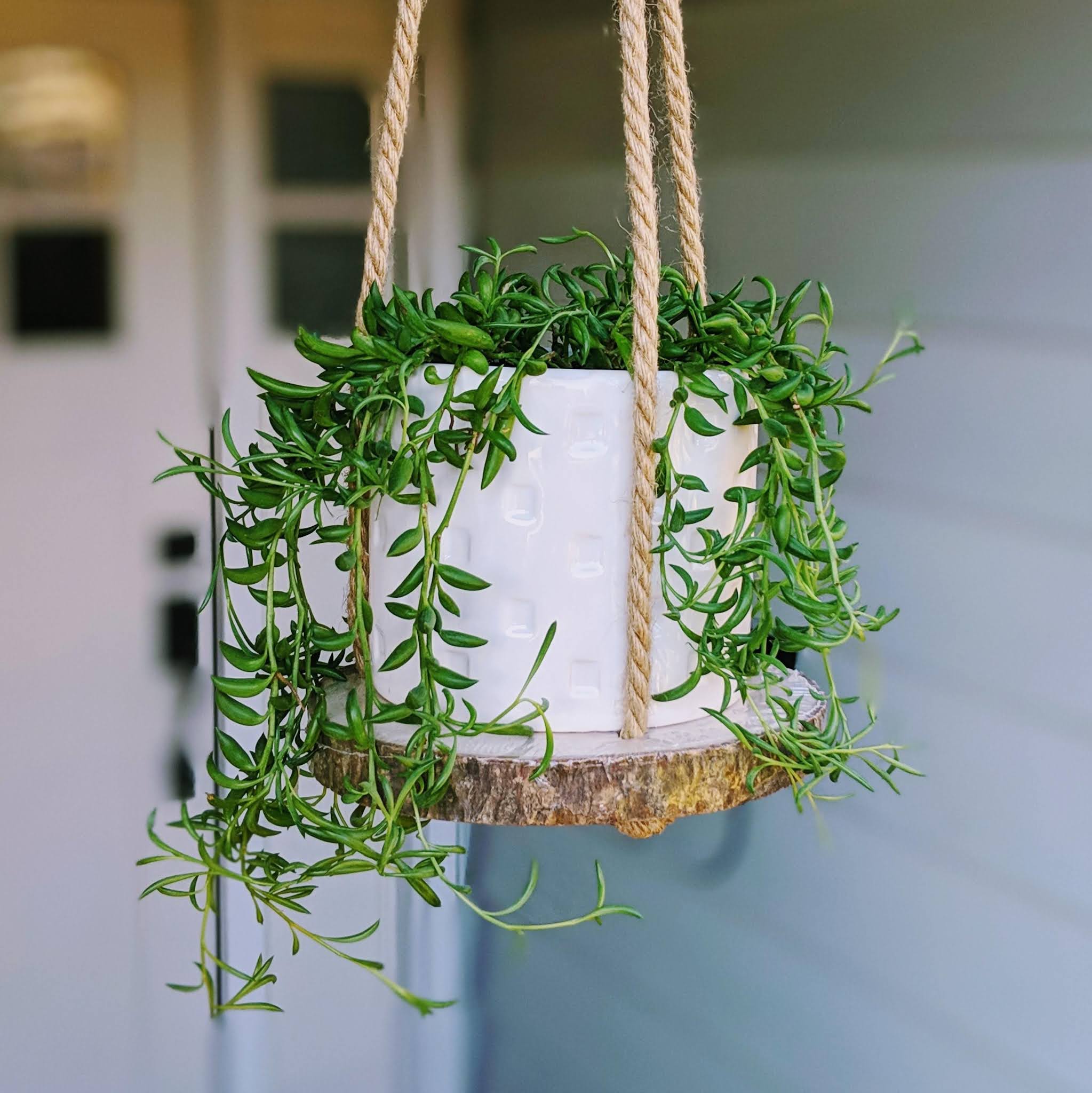Featured
- Get link
- X
- Other Apps
How to Grow and Care for String of Bananas
Move over string of pearls - there’s a new trailing succulent on the scene. The string of bananas (Senecio radicans) is actually a close relative of the popular string of pearls succulent but is known for being faster growing and easier to care for. For anyone who has unsuccessfully tried to keep a string of pearls alive, the string of bananas may be the succulent for you.
Native to South Africa, the string of bananas is a part of the Asteraceae family and is characterized by glossy, banana-shaped leaves that grow on long, hanging tendrils. It makes an excellent hanging houseplant or can be trained to grow upwards on a trellis or moss pole depending on the look you are going for. String of bananas can also be grown successfully outdoors in succulent gardens, but they are not frost-tolerant so require regions that experience warm weather year-round.
As with many other types of succulents, the string of bananas is grown for its interesting foliage rather than its blooms which are relatively inconspicuous. Learn how to grow these attractive and low-maintenance succulents.
String of Bananas Care
String of bananas are fast-growing, low-maintenance succulents that can be easily enjoyed by beginners and experts alike. They are drought-tolerant and do not require regular fertilizing, repotting, or pruning. The most important part of growing a healthy string of bananas is ensuring that the succulent receives enough light as they do not grow well in low-light conditions. Place your string of bananas in a bright, sunny window and ignore it and it will be happy.
Light
These trailing succulents require bright, direct light when grown indoors. Choose a location that receives at least six hours of sunlight throughout the day. String of bananas do well under grow lights as well if needed.
If this plant is not receiving enough light, it will become leggy and the banana-shaped leaves will become significantly more spaced out along the stem - a look that is often considered less visually appealing.
Soil
String of bananas requires a well-draining soil mix in order to help prevent root rot. You can purchase premixed cactus or succulent soil or mix your own at home. A simple mixture of 2 parts potting soil, 1 part perlite, and 1 part pumice or sand will provide your string of bananas with adequate drainage.
Water
This hardy succulent is considered to be drought-tolerant with low water needs. There is no universal schedule for how often a string of bananas will need to be watered as this can depend on a variety of factors, but, as a general rule, the soil should be allowed to dry out completely between waterings.
It is better to under-water a string of bananas than to overwater as they are highly susceptible to root rot. Keeping the succulent planted in well-draining soil and ensuring that the pot has adequate drainage will also help to prevent root rot.
Temperature and Humidity
While string of bananas are native to the dry and hot climates of South Africa, they do well in normal household temperatures and humidity levels. Ensure that your plant is kept away from heat/air conditioning vents as well as drafty or cold windows so it is not exposed to any extreme temperatures.
Fertilizer
As with most succulents, string of bananas does not require regular fertilizing, although they can benefit from light feedings in the spring and summer months to help boost growth. Using organic fertilizers such as worm compost, liquid kelp, or fish emulsion is recommended.
Potting and Repotting String of Bananas
String of bananas don’t mind being root-bound and do not need to be repotted regularly as a result. Once every couple of years to refresh the soil is likely enough for a string of bananas. The spring and summer months are the best time for repotting as it will give the delicate roots time to recover during the active growing season.
These plants are typically much easier to repot than other hanging succulent varieties such as the string of pearls because their leaves don’t fall off as easily. However, care should be taken during repotting to ensure that you don’t break any of the delicate stems. Have no fear if you do lose a couple of strands though - simply pop the end of the broken stem back in the pot and it will eventually grow its own roots.
Common Pests/Diseases
String of bananas succulents are not prone to any particularly serious problems, but they can be susceptible to many of the most common types of houseplant pests and diseases. Most notably, watch out for signs of root rot which can result from overwatering.
In terms of pests, keep an eye out for sap-sucking pests such as aphids, mealybugs and other scale insects, and spider mites. Early detection and proper treatment can help to keep these pesky insects under control and prevent a full-blown infestation.
Popular Posts
How to Grow and Care for Bougainvillea
- Get link
- X
- Other Apps



Comments
Post a Comment